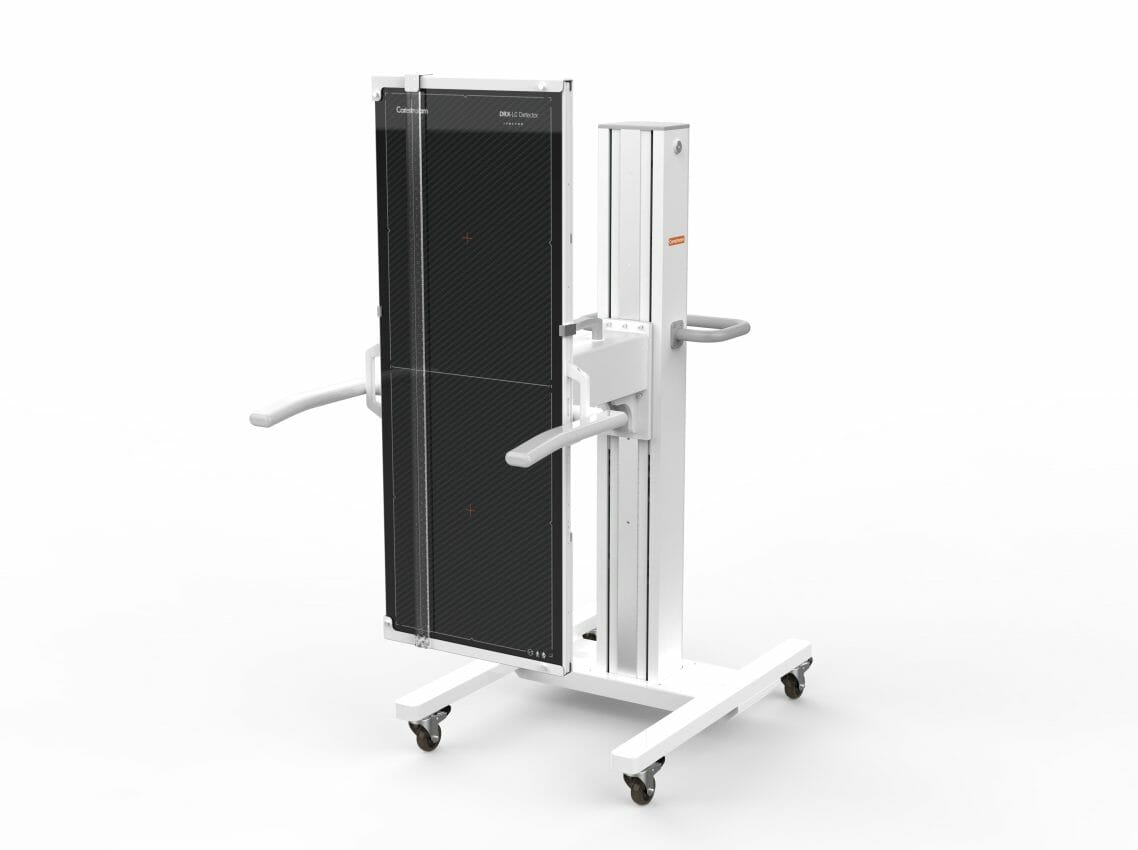Carestream Health’s new, versatile DRX-LC Detector is designed to improve patient comfort, image quality and diagnostic confidence, and productivity for long-length image capture in orthopaedics.

Capturing long-length images is tedious and time-consuming, especially for pediatric patients and those with limited mobility. The traditional multi-shot approach requires three to five exposures followed by manipulation and stitching of the images. Carestream’s DRX-LC Detector captures long-bone and spine images with a single exposure, making long-length imaging easier and more comfortable for both patient and radiographer by reducing hold time and the need for retakes. The single-shot exposure also delivers improved image quality—no more stitching—and reduces patient dose.
“Our smart, versatile DRX-LC delivers three powerful outcomes,” said Marco Riolfo, Worldwide Marketing Manager, Global X-ray Solutions, at Carestream. “It improves patient comfort and care by reducing the hold time and the likelihood of retakes (lowering dose). It helps improve diagnostic confidence and treatment planning by delivering improved image quality and precision; and it increases productivity and makes the image capture experience easier on radiographers.”
The second-generation long-length detector has several new features. The first is compatibility with digital radiography (DR) mobile systems and mobile retrofits, in addition to X-ray rooms and room retrofits. The mobility of the system lets facilities use the same detector for all phases of surgical treatment from pre-planning imaging in the radiology department to capturing images during the procedure in the OR to confirm placement and for post-operative assessment.
The versatile detector can be wireless or tethered. The wireless option eliminates trip hazards in the OR and minimizes the risk of contamination. The DRX-LC Detector has a Cesium (CsI) scintillator for better dose efficiency.
“The new wireless design, expanded system compatibility and mobile capacity of the DRX-LC Detector lets facilities expand their use of the system, maximizing their investment and bringing the benefits to more users,” said Mr. Riolfo. “Its versatility makes it a practical solution for facilities that conduct several long-length exams to sites that see a high volume of patients.”
The DRX-LC Detector uses ImageView Software, powered by Eclipse, the engine behind the company’s cutting-edge software platform that uses proprietary algorithms and artificial intelligence to amplify the value of the entire imaging chain. Like other Carestream solutions, it features X-Factor, which allows the detector to be shared across all DRX equipment.